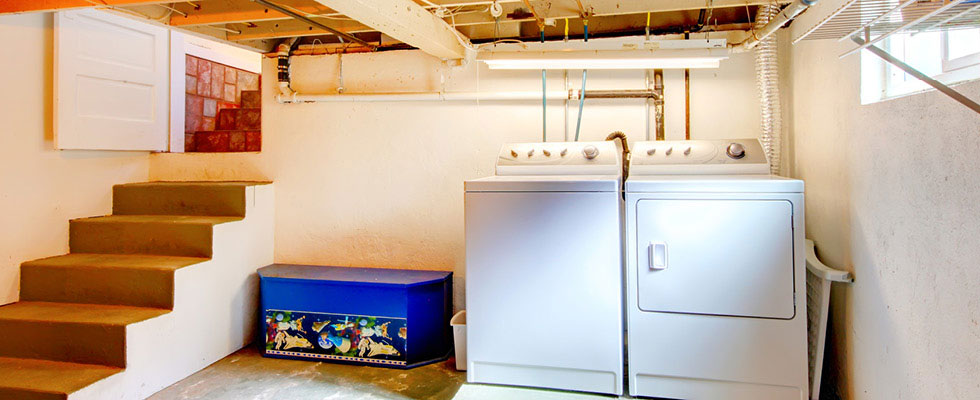
On Dec. 8, 2023, the United States District Court for the Eastern District of Pennsylvania granted summary judgment in favor of the alleged manufacturer, seller and installer of a propane-fueled dryer in a case arising from a fire caused by the ignition of leaking propane. The plaintiffs argued that the leak and fire were the result of defective design and manufacture of the dryer, as well as inadequate warnings. The case is Petka v. Samsung.
Cracked Pipe
In November 2020, a fire occurred in the basement of the home of Brian and Jennifer Petka in Collegeville, Pennsylvania. It started shortly after Jennifer turned on the propane-fueled dryer. The fire caused extensive damage to the home, and the Petkas’ insurance carrier paid out over $400,000 in remediation costs. Subsequent investigation revealed that the origin of the fire was near the dryer and that there were significant cracks in the rigid steel piping that connected the dryer to the home’s propane supply piping. Investigators for all parties agreed on three things. First, propane leaking from the cracked pipe was ignited and caused the fire. Second, the crack was the result of a fatigue failure caused by the repeated motion of the dryer. And third, the use of rigid steel pipe instead of a flexible connector to connect the dryer was in violation of code, as well as the installation instructions for the dryer.
Exact Match
The Petkas had purchased their home in Collegeville on March 21, 2017. They claimed they bought the Samsung dryer involved in the incident at Lowe’s a week before they moved in and that they paid somewhere between $400 and $800 extra to Lowe’s to have the appliance delivered and installed at the Collegeville home. Such delivery and installation work was typically done for Lowe’s by a contractor named XPO Last Mile Inc.
However, neither Lowe’s nor XPO — nor the Petkas, for that matter — had any record of a March 2017 sale, delivery and installation of a Samsung dryer to the Collegeville home. What they did have was a record of a sale, delivery and installation of a Samsung dryer at the Petkas’ prior home in Gilbertsville, Pennsylvania. And the serial number of the incident dryer at the Collegeville home exactly matched that of the one installed at the Gilbertsville residence.
Negligent Design?
There was no evidence as to how the incident dryer got from Gilbertsville to Collegeville. The Petkas swore they bought a new dryer for the Collegeville house and had it installed by Lowe’s. Certainly, one could infer that they in fact just moved the Gilbertsville dryer to Collegeville and installed it themselves, but they denied this.
The Petkas filed a suit against Samsung, Lowe’s and XPO. Even though the pipe that cracked was not a component of the dryer, they claimed that the dryer was negligently and defectively designed and that the installation instructions were inadequate because they did not explicitly state that rigid pipe should not be used in the installation of the appliance.
The Manual
What was wrong with the design of the dryer? The Petkas’ lawyers claimed that it should have been designed to shut off — and thus not be available as a potential ignition source — in the event of a gas leak such as the one that occurred at the Petkas’ house. Precisely how this was to be accomplished was not clear from the court record. One of the Petkas’ experts did opine that the dryer was the source of ignition, but no expert said that the appliance should have been designed to shut off when there was a gas leak.
As to warnings, the manual for the dryer contains the following statements:
“A 1/72” (1.27 cm) gas supply line is recommended and must be reduced to connect to the 3/8” (1 cm) gas line on your dryer. The National Fuel Gas Code requires that an accessible, approved manual gas shut-off valve be installed within 6” of your dryer. … Do not reuse old flexible metal gas lines. Flexible gas lines must be design certified by the American Gas Association (CGA in Canada).”
Defense Motions
The Petkas pointed out that this language does not explicitly require the use of flexible connectors and does not explicitly prohibit the use of rigid connectors. They also relied on language from a General Electric dryer manual, which states, “You must use with this dryer a flexible metal connector (listed connector ANSI Z 21.24/CSA 6.10).”
All three defendants filed motions for summary judgment, contending that there was insufficient evidence for a jury to even consider claims against them. Lowe’s and XPO first pointed to the fact that their records showed no sale, delivery and installation of a dryer to the Collegeville address, and that the incident dryer bore the same serial number as one that had been earlier delivered to the Gilbertsville address.
Enough Evidence?
As to XPO, the Petkas argued that Lowe’s typically contracted with XPO to perform deliveries and installations. However, the Petkas could not remember who installed the dryer at the Collegeville home.
Based on this testimony the court held that it would be speculative to conclude that XPO made this particular delivery and installation, and it granted XPO’s motion. However, since the Petkas specifically testified that they purchased a new dryer for the Collegeville home at Lowe’s, there was enough evidence available to allow a jury to decide the claim against Lowe’s.
The court then turned its attention to the substance of the claims against Lowe’s and Samsung. On the claims that the dryer was negligently designed and unreasonably dangerous, the court noted the Petkas agreed that “there is no dispute that plaintiffs’ claims relate to an allegedly faulty installation, and not a faulty product.” This, it said, “dooms their product defect claim.” The assertion that the dryer should have been designed to shut off in the event of a gas leak was unsupported by the Petkas’ experts.
Adequate Warning
Finally, the court addressed the failure to warn claim. While the Samsung manual did not explicitly state that a flexible connector was required, it did clearly state that the “dryer must be installed by a qualified technician in accordance with local code requirements.” And applicable local codes here “do not permit the use of a rigid connector in this application.”
Finding no genuine issue on which the Petkas had submitted sufficient evidence to allow a jury to consider their claims, the court granted the defendants’ summary judgment motions and dismissed the case.


